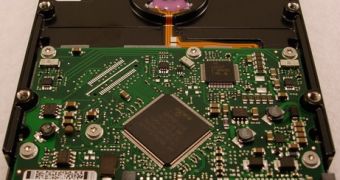Japanese corporation Crestec, a specialist in electron-beam lithography systems, claims to have developed a device for manufacturing the masters for a next generation storage media technology, called patterned media disks.
Crestec is using its electronic-beam lithography process for manufacturing these patterned media disks. They are alleged to store data at great densities of 0.5 Terabit per square inch, but the process can be improved by modifying the machinery's lens, in order to acquire data densities of 1Tb per square inch.
The new machine creates the master disk by burning tiny holes in concentric circles on a special, resistant material, layered on a silicon substrate. The punched holes measure only 10 nanometers in diameter, but they are a vital part of the whole process. After the beam has finished punching the nano-holes into the material, the silicon substrate is etched in order to leave pits where each hole was punched. The actual lens can punch the next hole 35 nanometers after the previous, which gives the data density.
The patterned media disks hold the data on tiny magnetically-isolated "islands" - each island holds a single bit of information. The actual patterned media disk is created by pressing the master into a resin-based material, thus creating a disk with nanometer-sized isolated islands where the recording material can be applied.
Given the fact that the largest hard disk drives that are available at the moment can hold 250 Gigabits per square inch, the patterned media density of a Terabit in the same square space will allow engineers to create 1TB laptop hard drives sooner than they were initially expected.
Following the same logic, the patterned media drives could account for 500 GB portable media players and desktop systems with hard-drives that beat the capacity of a dedicated storage server.

 14 DAY TRIAL //
14 DAY TRIAL //